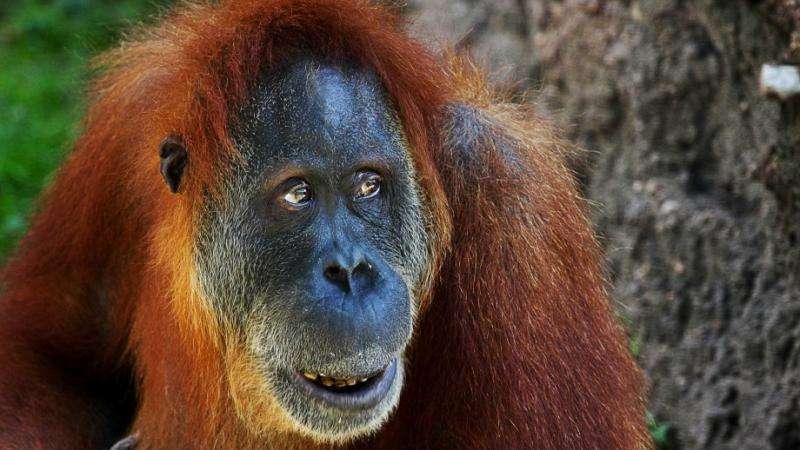The history of orangutans in human culture

The similarities between orangutans and humans, and the argument that primates should be given their own form of human rights, will be put under the microscope in a presentation at The Australian National University (ANU).
Professor Robert Cribb, co-author of the book Wild Man from Borneo: A Cultural History of the Orangutan, has traced people's fascination with the human-like characteristics of orangutans since they were first brought back to Europe 400 years ago.
"The first orangutans that came to the west were babies that had been taken from their mothers and managed to survive the long trip to Europe," Professor Cribb said.
"They were small cuddly and cute, and people looked at them as entertaining, if unusually hairy, children.
"People were fascinated by the way they would be willing to wear clothes, the way they'd make their beds. They would watch people eating at a table and then imitate human behaviour using cutlery."
This observation led to a conflict of views on just how close to humans orangutans were. Scientists of the time argued that while they may show human-like behaviours, their anatomy was very different and this was the defining factor.
This view was countered by 18th century philosophers, notably by influential French thinker Jean-Jacques Rousseau, who argued that in the right circumstances orangutans could be incorporated into human society.
Charles Darwin later proposed that humans and apes had a relatively recent common ancestor. That was reinforced in the late 19th century by the rise of psychological research and the idea that human identity was defined by intelligence.
"Scientists began conducting intelligence tests on humans and also on great apes," he said.
"In the first experiments they found chimpanzees did much better on the tests, so they emerged as being the most intelligent of the apes and so thought of as closest to humans in evolutionary terms.
"What they began to discover in the 20th century was that orangutans were actually bored by the simple tests that the chimpanzees thrived on, like stacking boxes to retrieve a banana."
"When they were confronted with much more challenging tests orangutans streaked ahead of chimpanzees," Professor Cribb said.
Further research has revealed that orangutans have the ability to learn language and communicate using hand signals, and even make up their own new words.
This has led many researchers, including Professor Cribb, to believe orangutans are the most intelligent of the primates. Although chimpanzees also have their advocates.
"We've got quite a few examples of orangutans showing what's called Machiavellian intelligence. Trying to get into the mind of a person and manipulate it," he said.
"They've been known to show compassion, there's a video of an orangutan rescuing a duckling that was in difficulty. That's something pretty special."
Professor Cribb said the great apes are thought of as close enough to humans that there is now a strong movement to give them qualified human rights, an idea he thinks has merit.
"That would include the right not to be enslaved or imprisoned, so not being used in circuses and zoos and not being used in medical experimentation," he said.
"I think it would be a good idea."
Provided by Australian National University


















